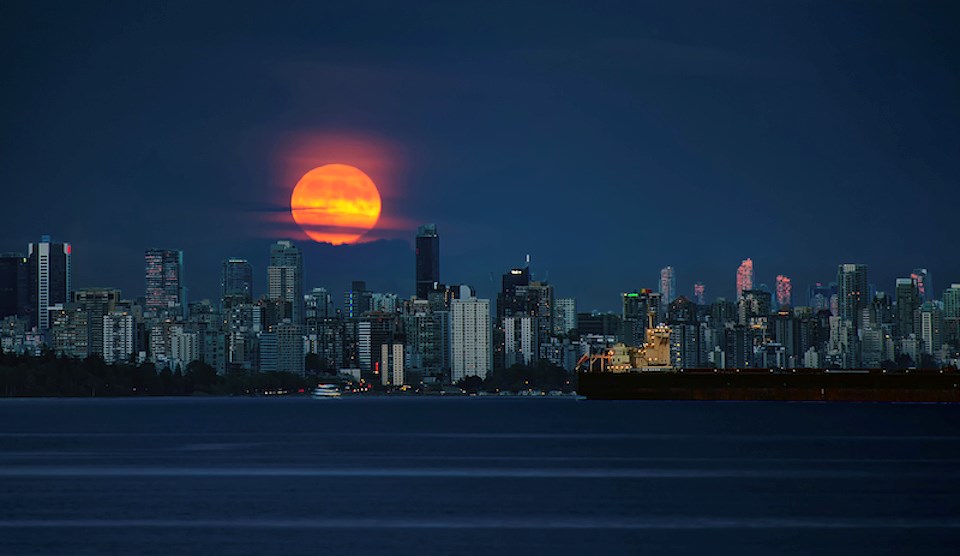Metro Vancouver stargazers have the chance to bathe under the light of what appears to be a completely full moon a couple of times this week.
The full "Hunter" moon is slated to be its fullest in Vancouver on Oct. 9 at 1:54 p.m., according to timeanddate.com. But the moon will appear nearly full in the days leading up to the big night.
But there's a reason that this full moon might appear at its largest for longer.
Marley Leacock, an astronomer at the H.R. MacMillan Space Centre, told Vancouver Is Awesome that there is a shorter amount of time between the moon's rising times right now than at the end of the month.
"This does cause the full moon on [Oct. 9] and what appears to be a full moon on [Oct. 10] both rise shortly after sunset," she said.
"The change in rising times between [Oct. 10] and [Oct. 10] is only 16 minutes — which is very short."
Metro Vancouver sky-watchers can view rare 'double' full moon
October isn't the only month that had a short time between rising times, however. September's "harvest" moon, on Sept. 10, had the same shortening of time between moon rises that happened before and after the full moon.
"The difference between the moon rising on [Sept. 11] and [Sept. 12] was also 16 minutes," she explained.
In November, the difference between the rising of the full moon and the moon the next day will be 25 minutes, which is more in line with the 30- to 70-minute range of differences, with the average being 50 minutes, Leacock said.
"All this to say that it does point to the reason being the equinox and some complicated orbital motions of the Earth, Moon, and Sun. The full moon will appear to rise twice in Vancouver," she notes.
The moon will rise in the east at 6:47 p.m on Oct. 9 and then at 7:03 p.m. in the northeast on Oct. 10. While the moon will begin to move into its waning gibbous phase after Oct. 9, the change in illumination is negligible to our eyes, so it will still appear full.
The hunter moon may have derived its name from the time that people would hunt in preparation for winter. It is also referred to as the Sanguine or Blood Moon, "either associated with the blood from hunting or the turning of the leaves in autumn." The Old Farmer’s Almanac notes that Native peoples would give distinctive names to each reoccurring full moon to mark the change of seasons.



